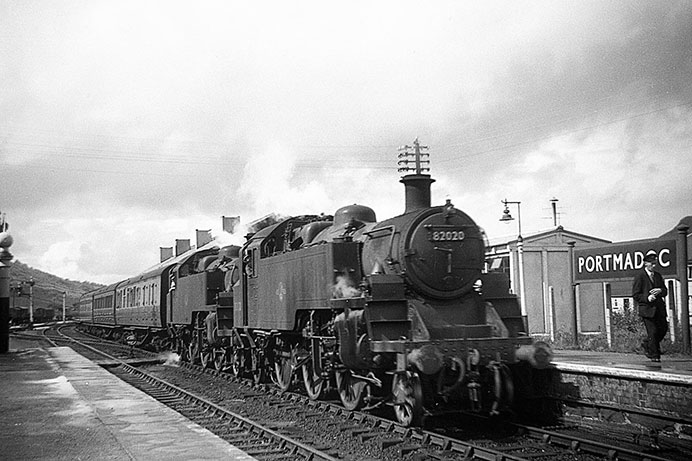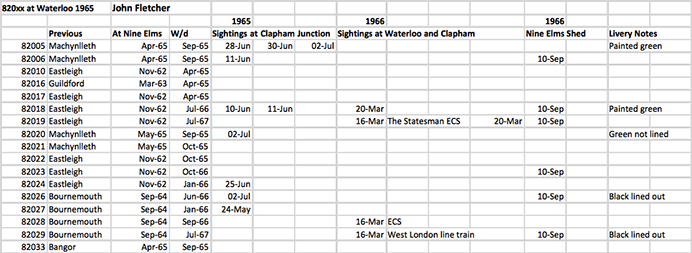
Chairman’s Chat – May 2023
By Neil Taylor
I am writing this Chairman’s Chat with some important announcements. The article also contains a couple of lovely historical items from members who have allowed me to use their wonderfully rich input. I have a very positive update for the Boiler Fundraising activity and I will provide a brief summary of the AGM which happened on Saturday the 27th May at the Kidderminster Railway Museum. [Minutes for members to follow].
First, I have an update regarding the relationship with our host railway, the Severn Valley Railway (SVR). We delayed the AGM this year in order to see if we could get some more visibility from the SVR regarding their plight and how that may affect progress on the locomotive and its potential future on the railway. We organised a meeting with the new General Manager, Mr. Gus Dunster, towards the end of May 2023.
Meeting with the SVR
Alan Brighouse and myself met with Gus and Steam Engineering Manager – Duncan Ballard. The meeting was brief but focused. Alan and I asked the difficult question about the current state of the railway. We were provided with a very candid overview of the survival plan and actions taken by the leadership. It was clear that drastic actions had led to a more stable situation and that many of the initiatives were bearing fruit. My conclusion was that the slide into financial difficulty had been arrested and that with close monitoring the situation should improve. I don’t think any of the parties could say that the actions were yet enough to ensure a full recovery, but this would become clearer over the summer running season.
We then discussed the progress on the assets that the SVR were helping us with. The progress on the boiler was really super, and we are now seriously thinking about bringing the barrels into the boiler shop for mating with the Firebox. The completion of the boiler in good time for its required trial fitting into the frames is not seen as a problem. On the downside the progress on other items was discussed, with acceptance that this could and should be improved. There was consensus that we must get on with a number of critical items, and that this would be helped by the SVR not starting any new overhauls in the immediate future. The focus would be on clearing the decks of current overhauls, which includes the work on 13268, 4150 and 82045. We discussed the fact that the SVR had seen escalation of costs on a number of fronts; labour, materials and utilities being most relevant. We outlined the 82045 continued commitment to contributing to material costs and thus absorbing the escalated costs associated with the materials.
More importantly for 82045 we sought assurances that the locomotive would be important to the railway and to its future plans. It was made very clear that the loco was very important and that the significance of the 1000th BR standard to be completed was not lost on the railway. With a little further pressing the railway would provisionally commit to a real focus to (a) assist in completion and (B) ramp up promotion for the locomotive’s launch. Further to this we discussed a potential formal launch at one of the Gala’s in 2025. There was no barrier to this, in fact it was seen as a real positive target. With this really positive agreement we felt that we had a mutual commitment to completing the locomotive.
AGM
Over 40 society members took time to attend the AGM on the 27th May 2023. It is a positive sign of a healthy organisation that so many people turned up in person. The debate was well natured and very interactive with plenty of good questions from the floor.
At the AGM I announced that our target was now to complete the locomotive in 2025 and our preference would be to launch at the Spring Steam Gala. Our locomotive could be the centrepiece of a “BR Standard” themed Gala, and the SVR will take this proposal to the appropriate committee. It would be great to see as many examples of Robert Riddles’ designs as possible, and we will be using our contacts to try to make this happen.
The implications of this launch target are that we may have to use more external contractors which may increase costs. I think that now my preference would be to do whatever it takes to get the loco to the finishing line, however members will have to trust the leadership team to make good decisions when placing and managing contracts. We must not be reckless with the funds that we have so diligently raised.
To this end we are committing to complete the boiler by the end of this year / early next year, so that we have the bulky component parts in place around which we can build the essential fixtures and fittings. I also announced that we will hit our target of raising over £80,000 towards the boiler materials (see more later). At the end of this summer the Boiler Appeal will close and we will ready ourselves for our last fundraising activities. I expect to announce a “Final Push” appeal towards the end of the year. We will have to become even more inventive in raising the necessary funds to get the loco finished. A look at the accounts would suggest that we will require another £200,000 to finish all the essential components and systems. We will need to make a concerted effort to raise this in a couple of years, as this would normally take between 4 and 5 years if we did nothing special.
Other highlights from the AGM were the election of three new trustees to bolster the team of leaders and decision makers, a healthy financial situation portrayed and a significant and stable membership outlined.
Own a piece of the action!!
I mentioned above that we will hit the target for raising funds for the final boiler materials. The reason I am so confident is that we are pretty much already there if we include Gift Aid added to the current donations. However, if we look at some of the assets still to be allocated to individual’s we can articulate the shortfall in a tangible way. Some of you reading this may be inspired to make a specific donation. You will receive a Certificate of Sponsorship, which you can proudly display in the knowledge that you have contributed to the build of a unique locomotive.
What’s left to sponsor:
Boiler Tubes - 5 remaining @ £50 each = £ 250
Crown Stays - 80 remaining @ £50 each = £4,000
Flue Tube Materials - 11 remaining @ £150 each = £1,650
Flue Tube Assemblies - 11 remaining @ £600 each = £6,600
Superheater Elements - 7 remaining @ £1000 each = £7,000
I think that there is something for most people’s pocket amongst that selection?
Times Gone by….
This month we have a wonderful picture sent in by Rob Tibbits from York, depicting a double headed delight at Portmadoc in September 1960. In the picture are 82020 and 82031. I am not sure if this is unique, but I suspect that it was a rare event. The class often piloted other locos on the Cambrian lines, but this was more often a Manor or other class 4/5 loco.
Photo: Rob Tibbits, scanned by Paul Chancellor (Colour-Rail)
On a different region at a slightly later date John Fletcher was venturing down to Waterloo to observe members of the class, in the last knockings of Southern steam:
The 82xxx locos at Waterloo
I left school at Easter 1965 and for several months from May 1965 I commuted by train from Beckenham to Leatherhead. I arranged my travel home to have half an hour or so on Clapham Junction and recorded what I saw. I also visited Waterloo station in March 1966 and Nine Elms shed in September 1966.
I have extracted from my old notes of all my sightings of the 82xxx class engines and put them into a spreadsheet with the transfer and withdrawal dates of the engines at Nine Elms in 1965 also noted. I have not listed engines withdrawn before the end of 1964.
I can see from the allocations that these engines were first allocated to Nine Elms in 1962 and took up empty coaching stock duties, replacing other engines. All of the early transfers were engines which had been on the SR from new, allocated at first to Exmouth Junction (82010-19/22-25). All of these ended up at Nine Elms although not all lasted into 1965 and three were withdrawn in April 1965.
Another group (82026-9) had been transferred from the North East to Guildford in September 1963 and came to Nine Elms from Bournemouth in 1964. Further replacements in 1965 were found from other regions, four from Machynlleth and one from Bangor. None of these engines moved away from Nine Elms and the last two 82019/29 lasted until July 1967. They are pictured in “Southern Sunset ‘67” by John H Bird.
I saw seven different members of the class in 1965 and several more in 1966, including six on Nine Elms shed in September 1966.
I also have found some earlier records. In 1959 I was at school in the Manchester area. I saw some of the class on my school journeys. I think they were working up from the Chester direction as far as Altrincham on through workings from Wrexham as they were all allocated there at the time. 82000/20/21/31/37 were the engines involved.
I did not see any of the class anywhere else I have noted until 1965.
John Fletcher - February 2023

